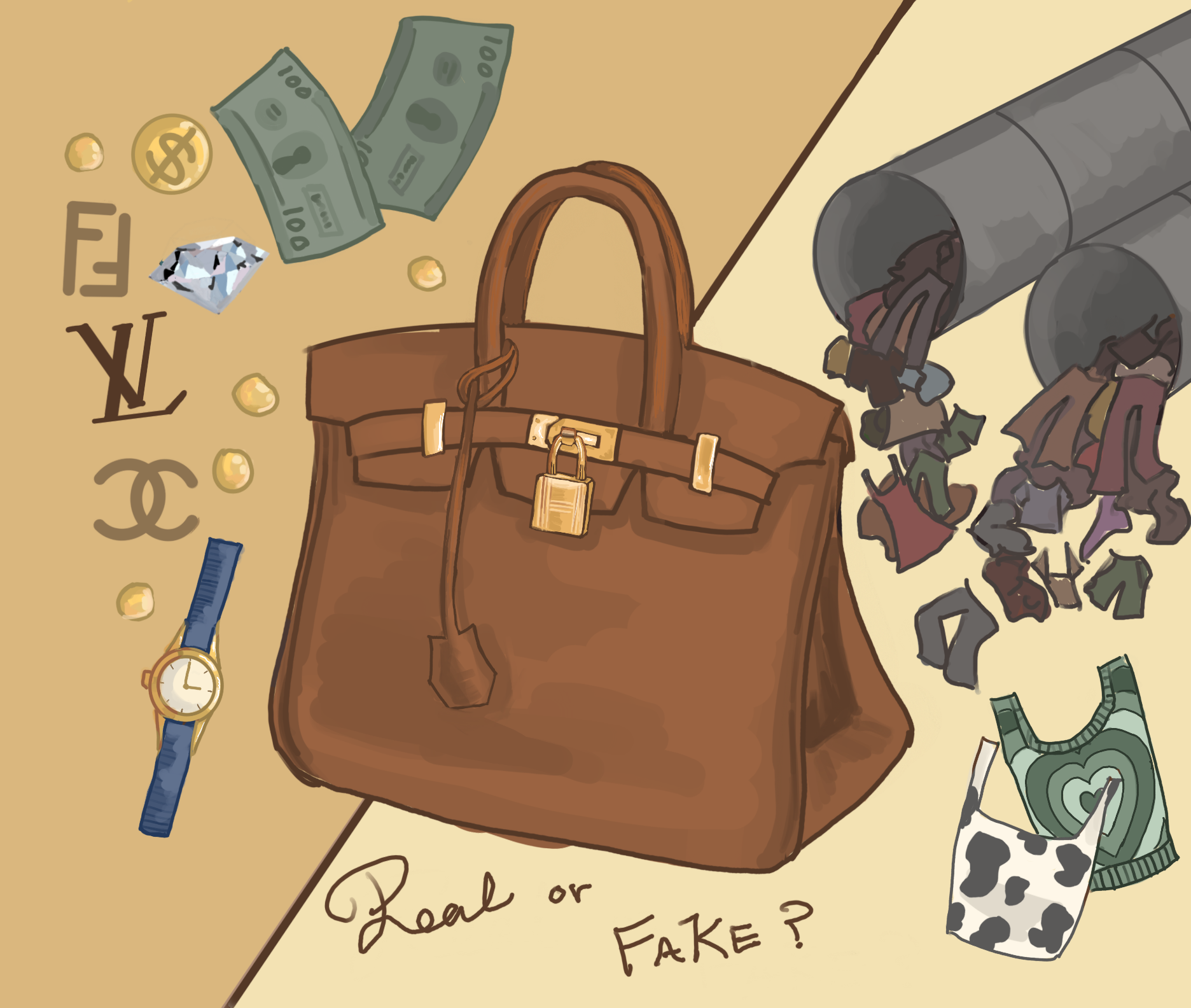As sophomore Stella Guo walks down the aisles of her favorite thrift store, a designer Hermes bag catches her eye — or at least what looks like one. Upon closer glance, however, she notices the bag’s flimsy, thin fabric and poorly stitched seams. The realization hits her hard: it’s a dupe.
A dupe, short for duplicate, is a product intentionally designed to replicate an original design. This is not to be confused with counterfeits — illegal copies that are designed to deceive consumers. The concept of dupes can be traced back centuries as craftsmen and artisans aimed to copy high-end products of the time for their clientele.
With recent advancements in technology and production processes, dupes are now easily accessible at all price ranges. Guo said these knockoffs exist mostly due to the excessive prices of original designs.
“High-end brands make things for people who want and have the ability to afford their products,” Guo said. “Dupes make it more accessible, but I’m always unsure about the quality.”
Popular brands known for their dupes include Shein, Temu, Forever21 and Zara, which all offer high-end designs at a lower price. However, with such an abundance of dupes in the fashion industry, it is easy to wonder if duping is actually legal.
Mark Lemley, a professor at Stanford Law School and an expert on intellectual property – the protection of creations of the mind, such as inventions, designs, and artistic works — said traditional copyright law does not officially exist in the fashion industry.
“I think all design builds on what came before,” Lemley said. “We can reasonably distinguish between exact copies, which don’t advance fashion design, and new designs that build on the work of others. Everyone builds on previous works in some way, and it’s important that intellectual property doesn’t get in the way.”
However, Lemley said there are opportunities for design protection, especially for luxury labels.
“While copyright law has traditionally not protected fashion, luxury brands can sometimes use trademarks to protect their designs, particularly things like purses that come with logos or have consistent, recognizable shapes,” Lemley said.
Kal Raustiala, a UCLA professor of comparative and international law, said in some ways, these dupes can actually benefit the fashion industry.
“Copying functions is an important element of — and perhaps even a necessary predicate to — the apparel industry’s swift cycle of innovation,” Raustiala said. “(Copying) is not very harmful to originators. Instead, it may actually promote innovation and benefit originators.”
Lemley also said luxury designers may even benefit from a limited amount of counterfeits circulating the market.
“(Luxury brands) face counterfeits, but to a certain level, counterfeiting may simply increase awareness and excitement of the brand,” Lemley said. “But too much would saturate the market, especially since part of what luxury brands are selling is the appearance of exclusivity.”
On the other hand, Guo said dupes can present significant challenges foryounger, mom-and-pop businesses.
“I think it hurts the fashion industry in a way that some small designers’ designs can get stolen without the credit, and it can really impact their businesses negatively,” Guo said.
A recent development in the fashion industry, “fast fashion,” allows companies to produce quickly and cheaply to keep up with the latest trends. It’s a global market that is forecasted to reach $185 billion by 2027.
Lemley said fast fashion brands can copy designs at an unprecedented speed.
“(Fast fashion) means that the window of time before counterfeits come out has shrunk, which can make it hard to distinguish yourself,” Lemley said. “That said, my sense is that luxury brands are still making sizable profits in this new environment.”
Not only is fast fashion changing the pace of the fashion industry, according to the Plastic Collective, but it is also extremely harmful to the environment. Fast fashion manufacturing requires high energy consumption, excessive water use, toxic chemical discharge and waste generation, producing 92 million tons of textile waste annually.
“Because fast fashion makes buying (these higher-end clothes) very cheap, it is easy for consumers to overbuy the items and create lots of waste,” Guo said.
Guo said as the industry evolves, brands must find ways to protect creativity while adapting to changing consumer demands.
“If I think I will wear or use (the dupe) often then I consider if it’s worth it to get it,” Guo said. “However, there are always more affordable brands out there making necessities without having to dupe high-end designs.”


